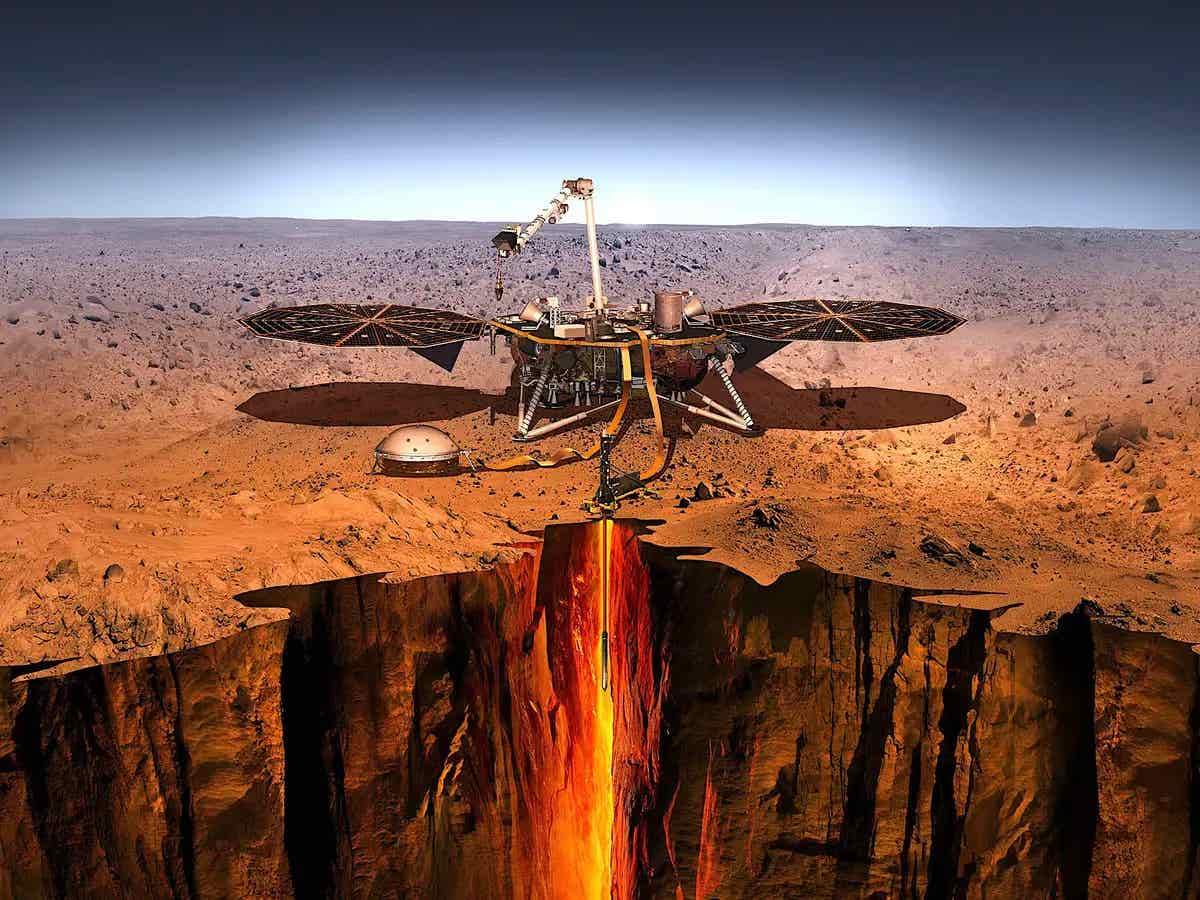Scientists find significant amounts of water hidden beneath Mars’ surface
Liquid water once shaped the Martian landscape dramatically, carving valleys, filling lakes, and forming vast oceans.

Scientists have found significant amounts of hidden liquid water deep beneath Mars’ crust. (CREDIT: NASA/JPL-Caltech)
Liquid water once shaped the Martian landscape dramatically, carving valleys, filling lakes, and forming vast oceans. Billions of years ago, during Mars' early days known as the Noachian and Hesperian periods, abundant water flowed freely across its surface.
But as Mars entered the colder, dry Amazonian era about three billion years ago, this vital liquid disappeared, leaving scientists puzzled about its fate. Today, researchers believe they've finally uncovered a significant reservoir of this lost water, hidden deep beneath the Martian crust.
Unlocking Mars’ Water Mystery
Mars’ transition from a wet world into today's barren desert has long intrigued scientists. Where did the water go? Some theories suggest Mars’ water evaporated into space, stripped away by solar winds interacting with the Martian atmosphere. Atmospheric measurements show increased levels of deuterium compared to hydrogen, supporting the idea that much water escaped into space.
Another popular theory points to water being chemically trapped in Mars' rocks. When minerals absorb water or hydroxyl groups through chemical weathering, they store water in a locked form. Orbital missions and rovers have spotted widespread evidence of these chemical reactions on Mars' surface, indicating that this process played a significant role.
Yet, many scientists suspect that much of Mars’ ancient water didn't vanish entirely. Instead, it seeped below the surface, stored in hidden aquifers deep within the planet’s crust. Confirming this, however, has proven challenging. Tools like ground-penetrating radar can explore underground structures, but their signals can't travel deep enough to thoroughly investigate Mars' deeper crust.
Seismic Clues Beneath the Surface
To solve this mystery, an international team of researchers—including Dr. Weijia Sun and Dr. Yongxin Pan from the Chinese Academy of Sciences, Dr. Hrvoje Tkalčić from The Australian National University, and Dr. Marco G. Malusà from the University of Milano-Bicocca—turned to seismic data collected by NASA’s InSight lander. Unlike radar, seismic waves penetrate much deeper into the crust, revealing clues hidden several kilometers below the surface.
Related Stories
The team analyzed high-frequency seismic waves caused by two major meteorite impacts (S1000a and S1094b) and one powerful marsquake (S1222a). By studying how these seismic waves traveled through the Martian crust, researchers created a detailed map of the underground structures.
Two sophisticated methods—a deterministic inversion and a Bayesian statistical inversion—confirmed a remarkable finding: a noticeable drop in seismic wave speeds occurring between depths of 5.4 to 8 kilometers.
Hidden Reservoir of Water
Lower seismic speeds usually signal softer, porous rocks saturated with liquid—likely water. The discovery suggests that beneath Mars’ dry surface lies a significant reservoir of liquid water. Dr. Hrvoje Tkalčić emphasizes the profound implications of this discovery: "The water involves profound questions about life and humanity’s future on the Red Planet."
This subsurface water layer potentially holds between 520 to 780 meters of global equivalent layer (GEL). GEL measures the depth if all the water was evenly spread across Mars’ surface. Intriguingly, this figure aligns closely with previous estimates that considered how much water Mars might have retained after losing some to space and mineral absorption.
It's important to note, however, that this estimated volume is based on seismic readings from just one location—InSight’s landing site. Thus, variations across Mars' crust could mean the actual volume of hidden water differs from these estimates. Additionally, the researchers didn't include ancient water possibly stored since Mars’ formation, meaning the true scale of Mars’ hidden water might be even greater.
Implications for Future Exploration
This discovery reshapes our understanding of Mars’ history and its potential for life. Liquid water is crucial for habitability, as it supports life and shields against radiation. Finding a deep reservoir boosts hopes for discovering signs of past or present life.
"These findings offer critical insights into the Martian water cycle," explains Dr. Weijia Sun, underscoring the broader scientific importance. It also sets a new direction for future Mars exploration missions. Future spacecraft equipped with advanced seismometers or drilling equipment could directly investigate these deep aquifers, potentially revolutionizing our search for extraterrestrial life.
Moreover, this discovery has practical implications for human exploration. Subsurface water reserves could support future colonies by providing drinking water, generating oxygen, and even aiding agriculture on Mars. As humanity plans to venture further into space, knowing exactly where Mars stores water becomes vital.
While today's Mars might seem desolate and lifeless, beneath its dry exterior lies a hidden world of possibilities. Scientists' seismic detective work has unveiled a crucial piece of the Martian puzzle, reminding us that the story of Mars—and humanity’s future there—is still being written.
Research findings are available online in the journal National Science Review.
Note: The article above provided above by The Brighter Side of News.
Like these kind of feel good stories? Get The Brighter Side of News' newsletter.



